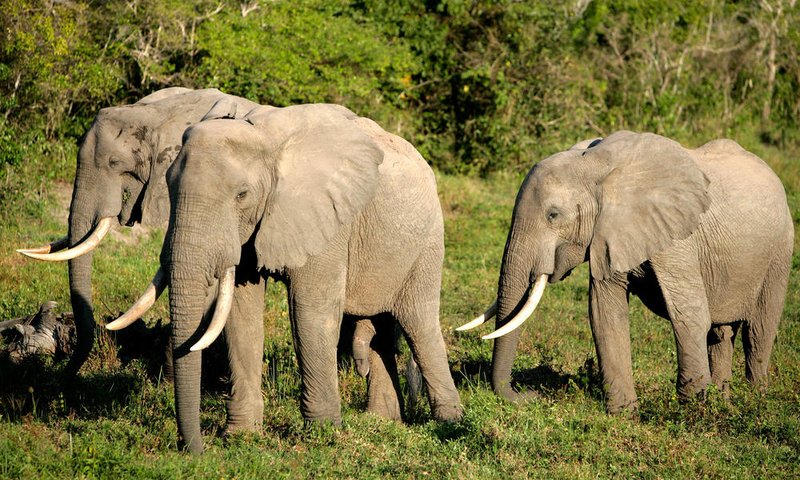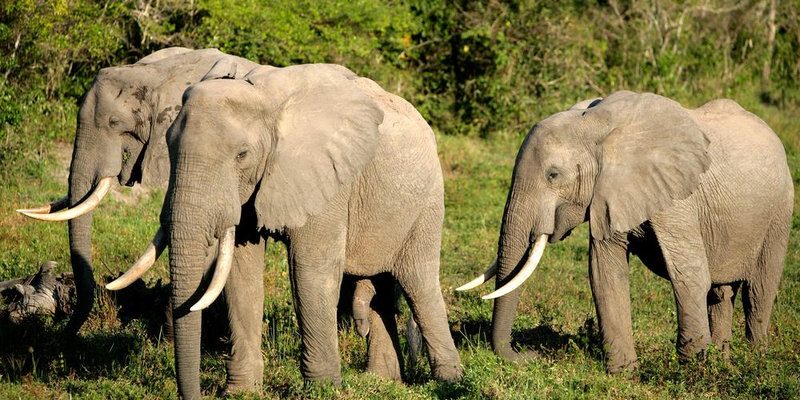
You might be wondering how an elephant that thrives in the dense jungles of Central and West Africa could be struggling. Well, let me explain. Like a slow-moving storm, factors such as habitat loss, poaching, and human-wildlife conflict are gathering force against these elephants. In this article, we’ll dive deep into the status of the African forest elephant and explore global conservation efforts aiming to protect these remarkable creatures from disappearing entirely.
Understanding The African Forest Elephant
The African forest elephant (*Loxodonta cyclotis*) is a unique species that differs from its savanna counterpart in several ways. These elephants inhabit the dense rainforests of West and Central Africa, where their smaller size and straighter tusks help them navigate through thick vegetation. Think of them as the introverts of the elephant world—thriving in the shadows rather than in open plains.
One striking difference is their size; African forest elephants are generally smaller, standing about 8 to 10 feet tall and weighing between 5,000 to 10,000 pounds. Their relatively smaller stature helps them adapt to their thick forest habitats. The lowland forests are their home, and they have evolved to become forest specialists, playing an essential role in shaping their ecosystems.
Here’s the thing: these elephants are not just cute and cuddly. They contribute to seed dispersal and help maintain the health of the forest. When they munch on fruits and foliage, they facilitate the growth of various plant species. Picture a giant gardener, nurturing the forest with every step they take. But with their populations declining drastically, their role as caretakers of the forest is now in jeopardy.
The Current Conservation Status
So, how endangered are African forest elephants really? According to the IUCN Red List, they are classified as Critically Endangered. This means that they face an extremely high risk of extinction in the wild. In simple terms, their numbers have plummeted by about 62% over the past few decades.
Wildlife experts estimate that fewer than 100,000 of these elephants remain today. Poaching for ivory and habitat destruction are the primary culprits behind this drastic decline. In the past, the tusks of African forest elephants were often overlooked, but as the demand for ivory increased, these elephants became targets.
Imagine a world where the sound of rustling leaves and trumpeting elephants becomes a distant memory. Without immediate intervention, that could be our future. Conservationists are doing all they can to prevent this tragic scenario, but it requires global attention and action.
Threats to the African Forest Elephant
The threats facing African forest elephants are like a rising tide—each one contributing to a larger concern. Here are some of the major challenges these elephants face:
- Poaching: The demand for ivory remains a significant issue. Despite international bans, poaching continues to be rampant, driven by illegal trade networks.
- Habitat Loss: Deforestation for agriculture and logging operations is rapidly shrinking their habitat. Imagine trying to navigate a maze that keeps getting smaller; that’s what these elephants are facing.
- Human-Wildlife Conflict: As humans encroach on their territory, conflicts arise. Farmers may see elephants as threats to their crops, leading to retaliation against them.
Each of these threats feeds into the others, creating a cycle that is hard to break. When elephants are forced into smaller areas, they may come into contact with humans more frequently, leading to increased conflict. This cycle can feel overwhelming, but understanding these threats is the first step toward effective solutions.
Conservation Efforts in Action
Despite the grim outlook, hope is not lost. Various organizations and governments worldwide are stepping up to advocate for the African forest elephant’s future. From anti-poaching patrols to reforestation projects, conservation efforts are becoming increasingly innovative and collaborative.
For example, many conservationists are using technology to combat poaching. Drones and camera traps are being employed to monitor elephant populations and protect them from poachers. Imagine soaring above the treetops, acting as the watchful eyes of the forest. It’s like giving these elephants a guardian angel.
Community education programs are also essential. Teaching local populations about the importance of elephants in their ecosystem encourages coexistence rather than conflict. When communities understand the role these elephants play, they’re more likely to protect them.
Moreover, international cooperation is crucial. Countries across Africa are beginning to unite to create wildlife corridors, allowing elephants to migrate safely between habitats, thus reducing the potential for human-elephant encounters.
The Role of Local Communities
Local communities are often the unsung heroes in conservation efforts. Their connection to the land and wildlife is unparalleled, and involving them in conservation strategies can lead to successful outcomes. When communities have a stake in protecting elephants, they’re more likely to value and safeguard them.
One example of this is community-based tourism. By engaging locals in eco-tourism initiatives, they can benefit financially from the presence of elephants rather than seeing them as threats. Imagine a village where people are excited to share their stories of elephants with visitors, creating a symbiotic relationship that supports both wildlife and human livelihoods.
Many organizations also offer financial incentives for communities that successfully protect elephants and their habitats. This creates a win-win situation: elephants thrive, and communities prosper. It’s a perfect example of how conservation can be a community-driven effort.
How You Can Help
While the challenges may seem daunting, every little action counts. You might wonder what you can do to support the cause of African forest elephants. Here are a few ways you can make a difference:
- Support Reputable Organizations: Donate to or volunteer with organizations that focus on elephant conservation. Your contributions can help fund essential programs.
- Raise Awareness: Share information about the plight of the African forest elephant on social media. The more people know, the more pressure we can put on governments and corporations.
- Choose Sustainable Products: By supporting companies that promote sustainable practices, you’re helping reduce habitat loss and poaching.
Remember, even small actions can lead to significant changes in the long run. It all starts with awareness and a willingness to take steps toward protecting these magnificent animals.
The future of the African forest elephant hangs in a delicate balance. While the threats they face are severe, there is still time to make a difference. With ongoing conservation efforts and a commitment to protecting their habitats, we can help ensure that these incredible creatures continue to roam the forests of Africa for generations to come.
Honestly, it’s a collective effort that requires input from all of us. By staying informed and engaged, we can play a crucial role in turning the tide against extinction. So let’s rally together to protect the African forest elephant—because every elephant matters, and every effort counts.

